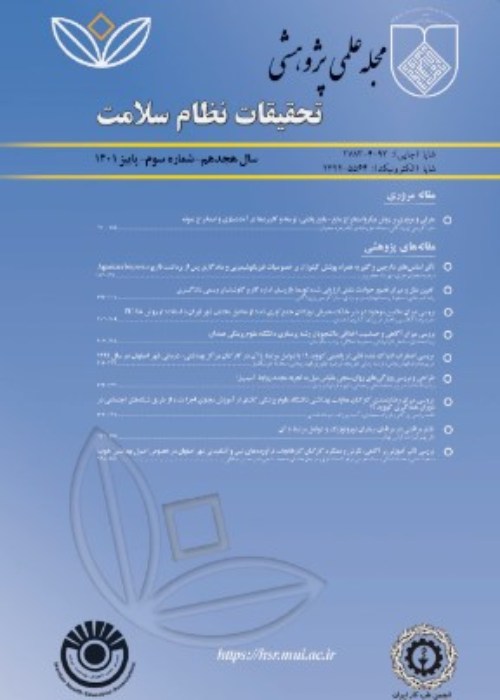Decomposition of Transformer Oil (PCB153 and PCB170) Using Microwave Radiation and Combined Tio2/H2O2
polychlorinated biphenyls (PCBs) are occupational and environmental pollutants and hazardous organic compounds that have created major environmental and occupational challenges. PCB compounds have different health effects in humans depending on sex, age, route of entry, intensity, and frequency of exposure. This study was conducted to determine the effect of microwave rays, hydrogen peroxide, Tio2, catalyst and ethanol on the composition of PCBs in order to reduce occupational exposure.
This was an experimental study carried out in the laboratory of Tarbiat Modares University between May and September 2011. This experiment used a MW oven, Pyrex vessel reactor (250 ml volume), Pyrex tube connector and condensing system. A 900 W domestic MW oven with a fixed frequency of 2450 MHZ was used to provide MW irradiation. Ray powers of 540, 720 and 900 W were used. A hole was pierced in the top portion of the oven and the Pyrex vessel reactor was connected with the Pyrex tube connector. PH and temperature was continuously monitored. The experiments were performed in triplicates and the results are presented as mean concentrations. The PCBs were analyzed by GC-ECD. Then, data were analyzed by SPSS software version16، ANOVA with repeated measurements, and t-test, and P < 0. 05 was significant.
The mean degradation of total PCBs in terms of microwave ray power of 540, 720 and 900 W was 84. 25%, 88. 81%, and 95. 84% respectively. The mean degradation of total PCBs in terms of ratio of solvent to askarel oil of 1:1, 2:1 and 3:1 was 53. 82%, 79. 06%, and 94. 95% respectively. The mean degradation of total PCBs in terms of lack of usage of H2O2 and usage of 10% and 20% of H2O2was 70. 9%, 84. 65% and 88. 91% respectively. The mean degradation of total PCBs in terms of lack of usage of and usage of 0. 05, 0. 1, 0. 15 and 0. 2 g of Tio2 was 70. 9%, 76. 53%, 77. 32%, 79. 10%, and 80. 19% respectively. The mean degradation of total PCBs in terms of lack of usage of H2O2/ Tio2 and the simultaneous usage of 10% of H2O2 and 0. 05, 0. 1, 0. 15, and 0. 2 g of Tio2 was 70. 9%, 89. 3%, 91. 18%, 92. 17%, and 93. 16% respectively. The mean degradation of total PCBs in terms of lack of usage of H2O2/Tio2 and simultaneous usage of 20% of H2O2 and 0. 05, 0. 1, 0. 15, and 0. 2 g of Tio2 was 70. 9, 93. 95%, 94. 95%, 95. 84%, and 97. 22% respectively.
The results of these experiments showed that using microwave rays, H2O2 oxidant and Tio2 catalyst lead to an efficient degradation of PCBS only in the presence of ethanol. Increasing the concentration of ethanol should increase the generation rate of hydroxyl radical, and thus the oxidation and dechlorination of the PCBs. The degradation rate of PCBs increased with increasing of the concentration of H202 and amount of Tio2.
- حق عضویت دریافتی صرف حمایت از نشریات عضو و نگهداری، تکمیل و توسعه مگیران میشود.
- پرداخت حق اشتراک و دانلود مقالات اجازه بازنشر آن در سایر رسانههای چاپی و دیجیتال را به کاربر نمیدهد.



